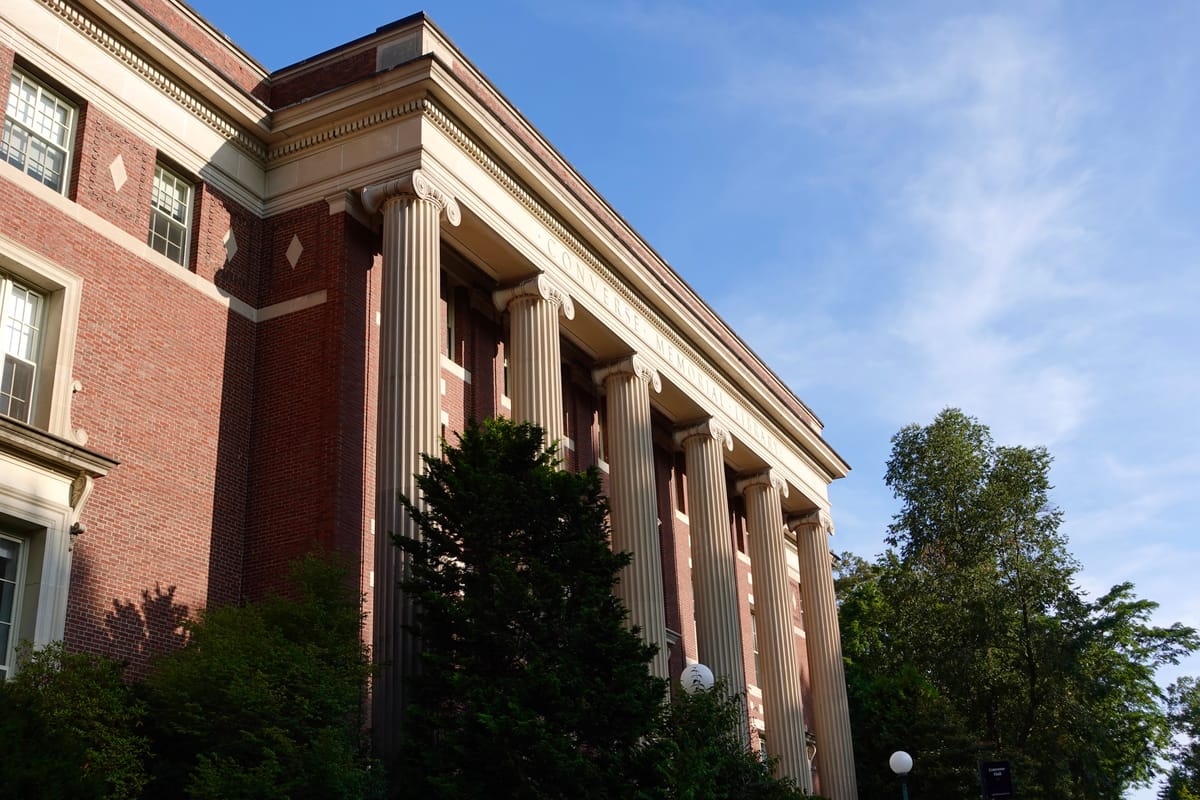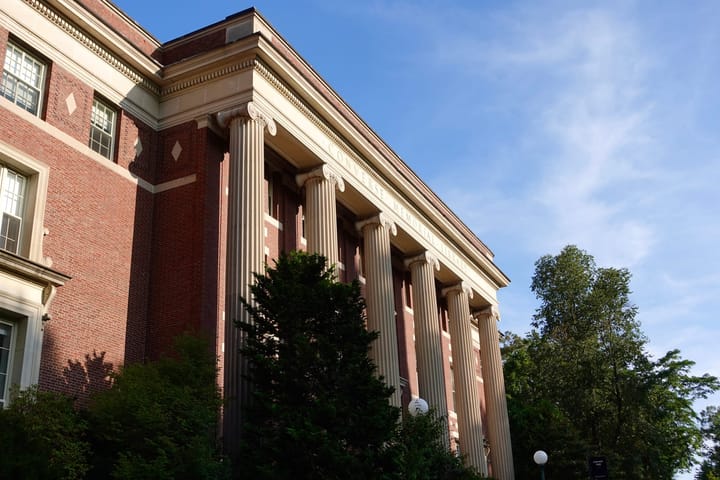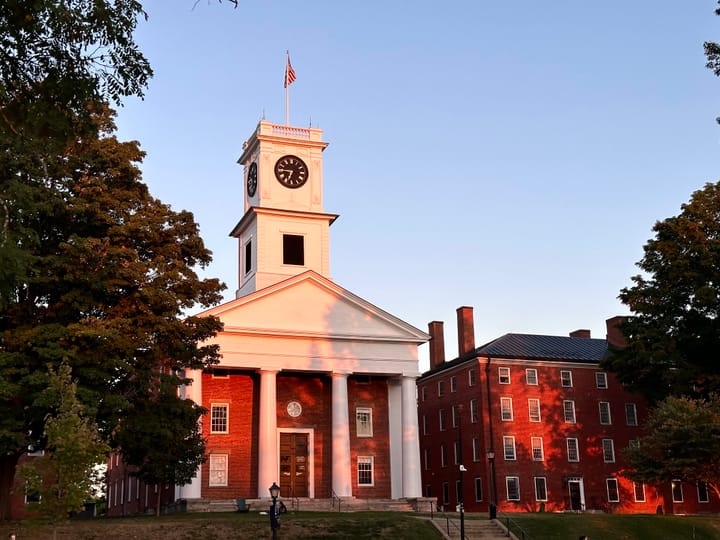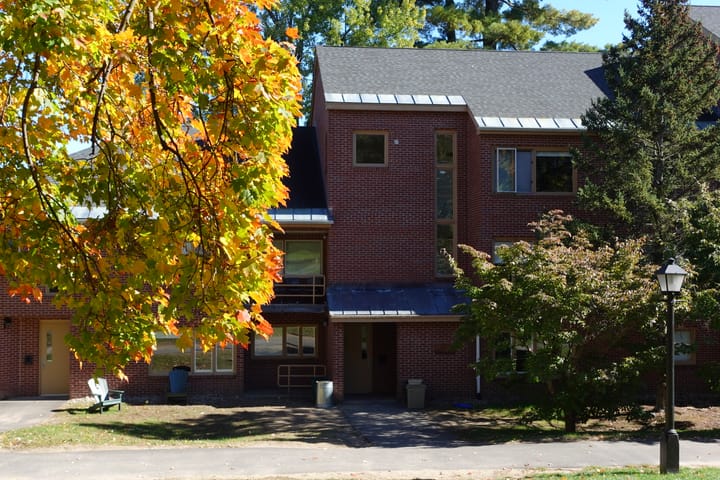Board of Trustees Town Hall Sees Improved Turnout
Last Friday, AAS hosted the Board of Trustees in a town hall panel discussion, aiming to help students better understand the board’s role in the college’s decision-making. The Trustees explained their role in college finances, how board meetings work, and answered pressing questions from students

On Friday, the Association of Amherst Students (AAS) hosted a town hall meeting that featured seven members of the Amherst Board of Trustees. The purpose of the meeting was to increase transparency around the board’s role in campus-wide decision-making.
Hosted in the Cole Assembly Room, the event was attended by non-panelist board members, community members, and over 20 students — a major increase in student attendance compared to last year. In between hard-hitting questions, laughter was constant throughout the event, as board members and students cracked jokes with each other.
AAS President Shane Dillon ’26 and Vice President Phuong Doan ’26 moderated the conversation, asking a series of pre-submitted questions to the board before turning it over to the students. Later, the board asked questions to students in attendance about their experiences at the college so far.
“The main purpose of this conversation is to demystify the black box that the Board of Trustees seems to be,” Doan said.
The event began with a welcome statement from President Michael Elliott, who, as president, also serves as a member of the Board of Trustees.
The board members then introduced themselves. All members of the board are alumni, ranging from the class of ’87 to the class of ’01. They all serve six-year terms and were either elected to the board by the alumni body or appointed by the Trusteeship Committee.
The board members explained that the board’s role was to uphold the college’s mission and to ensure endowment investments, donations, and tuition are enough to cover the $280 million operating budget for each school year.
The trustees also discussed misconceptions, clarifying the things they do not do for the college. They explained that senior staff and administrators are the ones who take on most localized decision-making, such as the decision to remove fridges and microwaves from dorms.
Dillon then asked what the decision-making process looks like at each board meeting. Dwight Poler ’87 summed it up as an “active debate,” where all viewpoints and opinions are voiced until an agreement is reached as a board. “It is kind of a messy process, [but] I will promise you it works better than the United States government right now,” Poler said.
As a relatively new member of the board, Ji-Yeun Lee ’88 stated that all members make sure to “leave their personal interests at the door.”
“Everyone understands that when we come into that room, we are here to serve the college, not your personal pet project,” Lee said.
Doan then asked why board discussions are kept confidential, reporting that students feel the newly-implemented meeting summaries are “very vague” and contribute to the “mysteriousness” that many sense from the board. Lee explained that discretion is necessary in order to maintain an uncensored “robust debate” where a consensus can be reached even in uncomfortable conversations.
When asked how board members perceive the current student body compared to when they were at Amherst, Beth Cisneros ’89 felt students now spend less time having fun on campus compared to when she was a student. “The thing that was really different from our experience is how intense the conversations are about jobs and careers,” she said.
Other board members felt the Amherst experience had stayed consistent. “I think that you are all much more similar to us and our friends when we were at Amherst than different,” Simon Krinsky ’96 said.
Students then had the opportunity to ask questions to the board. Notably, Mikka Wolff ’27 challenged the board with a question about executive compensation, asking how the college’s funding can prioritize making “the most difference for students” by cutting down on executive compensation inflation and putting that to other expenditures. “Executive compensation stands today at $8 million and has increased dramatically over time,” Wolff said, citing a 21% increase since 2019 and a 25% increase since 2014.
Poler attributed the high level of executive compensation to employer competition, citing Chief Investment Officer (CIO) Letitia Johnson as an example. “We did compete for the best talent in the market for our CIO, and that’s why that comp[ensation] is high,” Poler said.
When asked how ready the board is to deal with immigration and visa challenges, the trustees reassured students that this was a topic they have been talking about for years, calling it “a high priority.”
“We will do everything we can to maintain that very important thing that makes Amherst so special, which is the international students,” Krinsky said.
Dillon expressed satisfaction in the event and turnout, crediting the strong questions and intimate setting that made the back-and-forth between students and the board easier. “I know many of the board members personally, and they love getting face time with students because they [too] were in our seats once,” Dillon said.





Comments ()